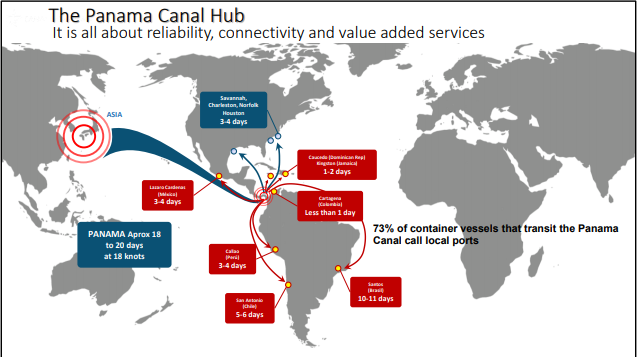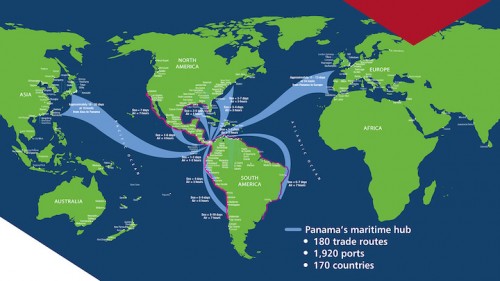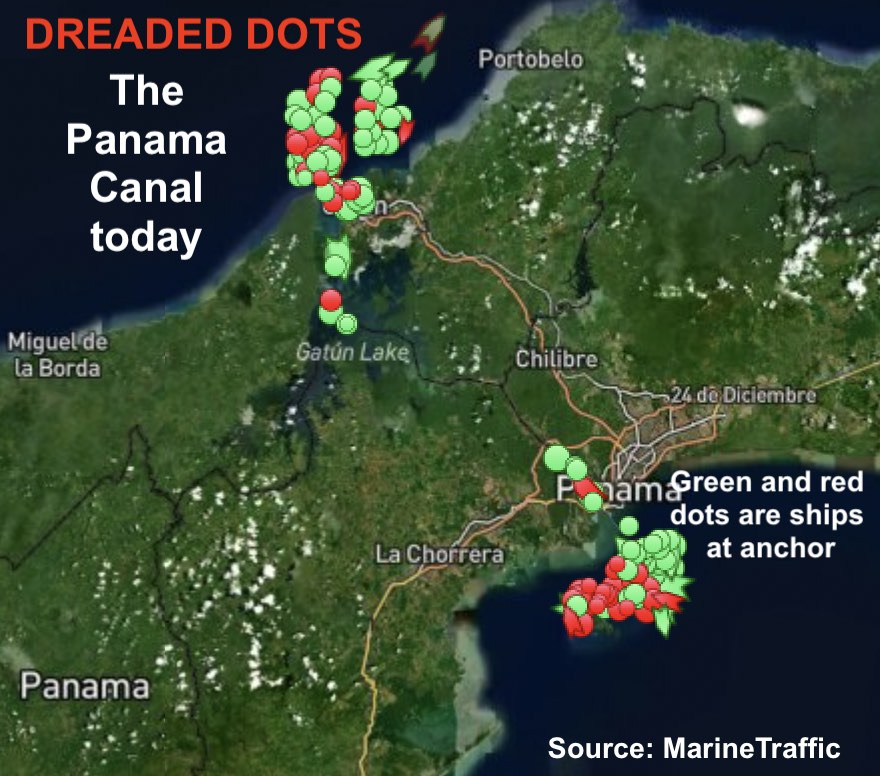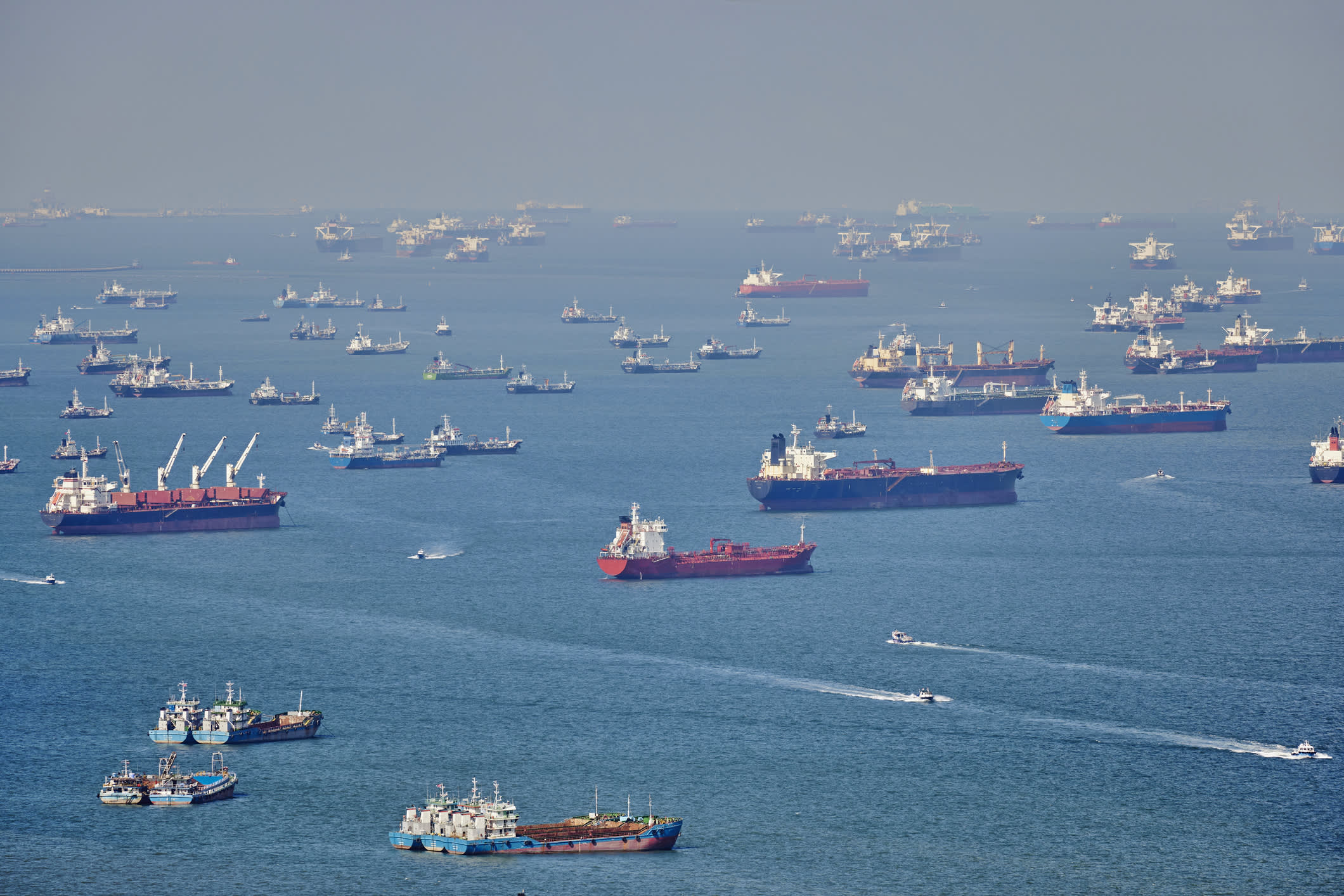The maximum sustainable capacity of the Panama Canal, including both the Panamax and expanded neo-panamax locks, is approximately 38-40 vessels per day, but generally around 34-38 vessels transit each day. This year’s El Niño has resulted in drier than normal conditions in Panama, intensifying the drought and leading to lower water levels in Gatun Lake.
This transit limit is the first climate-related restriction has been put in place since the opening of the expanded Panama Canal’s neo-panamax locks in 2016.
The congestion at the Panama Canal is so bad that one shipper paid $2.4 million to jump a line and get through the waterway: report
The congestion at the Panama Canal has gotten so bad that a shipper paid millions just to beat the queue, according to a company that uses the waterway.
A $2.4 million price tag was the winning bid for an auction held by the canal authorities for vessels to secure slots to sail through the waterway during the week of August 20, according to an anecdote shared by Oystein Kalleklev, the CEO of gas shipping company Avance Gas.
"You can skip the queue, but it's immensely costly," Kalleklev said at the company's second-quarter earnings call on Thursday. Kalleklev did not name the auction's winner, and Insider could not independently verify the auction's details.
"And when you add the regular fee, you're getting close to $3 million to get your ship through the canal," he added, per the call's transcript.
This isn't an isolated incident. Shipping giant Maersk told the Wall Street Journal on August 18 that the normal toll fee to cross the canal outside an auction was $400,000. The shipper had to pay $900,000 on top of the normal toll fee for each of its two ships that couldn't get a slot to cross the canal at the time.
Canal-crossing fees can range anywhere between $150,000 to over $1 million, depending on the size and capacity of the vessel.
Shippers are paying top dollar to transit the waterway because it's been hit by a serious drought this year, which has reduced the water levels and limited the number of ships that can pass through.
The Panama Canal Authority told Bloomberg that the highest bids in the auctions are generally won by liquefied petroleum gas or liquefied natural gas carriers.
The congestion in the Panama Canal is closely watched because 40% of US container traffic passes through the waterway, according to an August report from Container xChange, a logistics platform.
The Panama Canal Authority said in a Tuesday statement that there's been an improvement in the queue of vessels waiting to transit the canal. There are 108 vessels at both entrances to the waterway now — 20% fewer than the 135 ships last week.
However, the situation is concerning ahead of the upcoming holiday season, project44, a supply chain platform, told Insider on Tuesday.
"There has been a recent uptick in both average and maximum wait times to cross the canal, with several days in the past week exceeding an average of four days, representing a 100% increase compared to the typical two days," project44 said.
The Panama Canal Authority and Avance Gas did not immediately respond to requests for comment from Insider sent outside regular business hours.
A $2.4 million price tag was the winning bid for an auction held by the canal authorities for vessels to secure slots to sail through the waterway during the week of August 20, according to an anecdote shared by Oystein Kalleklev, the CEO of gas shipping company Avance Gas.
"You can skip the queue, but it's immensely costly," Kalleklev said at the company's second-quarter earnings call on Thursday. Kalleklev did not name the auction's winner, and Insider could not independently verify the auction's details.
"And when you add the regular fee, you're getting close to $3 million to get your ship through the canal," he added, per the call's transcript.
This isn't an isolated incident. Shipping giant Maersk told the Wall Street Journal on August 18 that the normal toll fee to cross the canal outside an auction was $400,000. The shipper had to pay $900,000 on top of the normal toll fee for each of its two ships that couldn't get a slot to cross the canal at the time.
Canal-crossing fees can range anywhere between $150,000 to over $1 million, depending on the size and capacity of the vessel.
Shippers are paying top dollar to transit the waterway because it's been hit by a serious drought this year, which has reduced the water levels and limited the number of ships that can pass through.
The Panama Canal Authority told Bloomberg that the highest bids in the auctions are generally won by liquefied petroleum gas or liquefied natural gas carriers.
The congestion in the Panama Canal is closely watched because 40% of US container traffic passes through the waterway, according to an August report from Container xChange, a logistics platform.
The Panama Canal Authority said in a Tuesday statement that there's been an improvement in the queue of vessels waiting to transit the canal. There are 108 vessels at both entrances to the waterway now — 20% fewer than the 135 ships last week.
However, the situation is concerning ahead of the upcoming holiday season, project44, a supply chain platform, told Insider on Tuesday.
"There has been a recent uptick in both average and maximum wait times to cross the canal, with several days in the past week exceeding an average of four days, representing a 100% increase compared to the typical two days," project44 said.
The Panama Canal Authority and Avance Gas did not immediately respond to requests for comment from Insider sent outside regular business hours.
September 6, 12.59 p.m.: The story has been updated with additional details of costs for crossing the canal.
Read next
__________________________________________________________________________________
_________________________________________________________________________
NEWS
__________________________________________________________________________________
The Panama Canal is one of the most important shipping routes in the world. But the average wait time for non-booked vessels there jumped by between 44% & 59% last month. The waiting time averaged ...
___









No comments:
Post a Comment